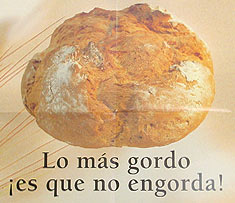 |
[ZAWiW] [gemeinsamlernen] [LiLL] | ||
|
Page 1 of 4
|
|
|
| home | ||
|
|
Results Granada | |
 |
||
Results Granada
Stand:
Analysis of the questionnaire about bread.SOLiLL – Granada |

|
1. Description of the group
Nº of questionnaires: 16
PERSONAL DETAILS:
Average age:
Sex:
|
Place of Birth:
|
Profession:
|
1.
a) What types of bread (rolls) etc, did you eat as a child and as a
juvenile?
Long rolls: 2
Home-baked bread: 4
Loaves (French style): 4
Round flat rolls: 1
Black bread: 2
Pan de picos: 1 no sé lo que es
Buns: 1
Barley bread: 2
Cottage loaves: 1
The interviewees are aware of the relation between the period in which they lived- all of them experienced the Spanish Civil War, or the post-war period- and the type of bread available.
For example when the bread was distributed and rationed by the state, the
bread they ate was black bread, although it was not their preferred type. Also,
it was more common to make bread in the home than it is now.
Quotes:
“I ate black bread, rationed by the state; it was said to be made from carob seeds.¨
“ The bread they use for the round flat rolls, known as hot bread was very
fine, with a lot of yeast; it was put into a very hot oven so that it cooked
very quickly. It was eaten hot, with olive oil.¨
